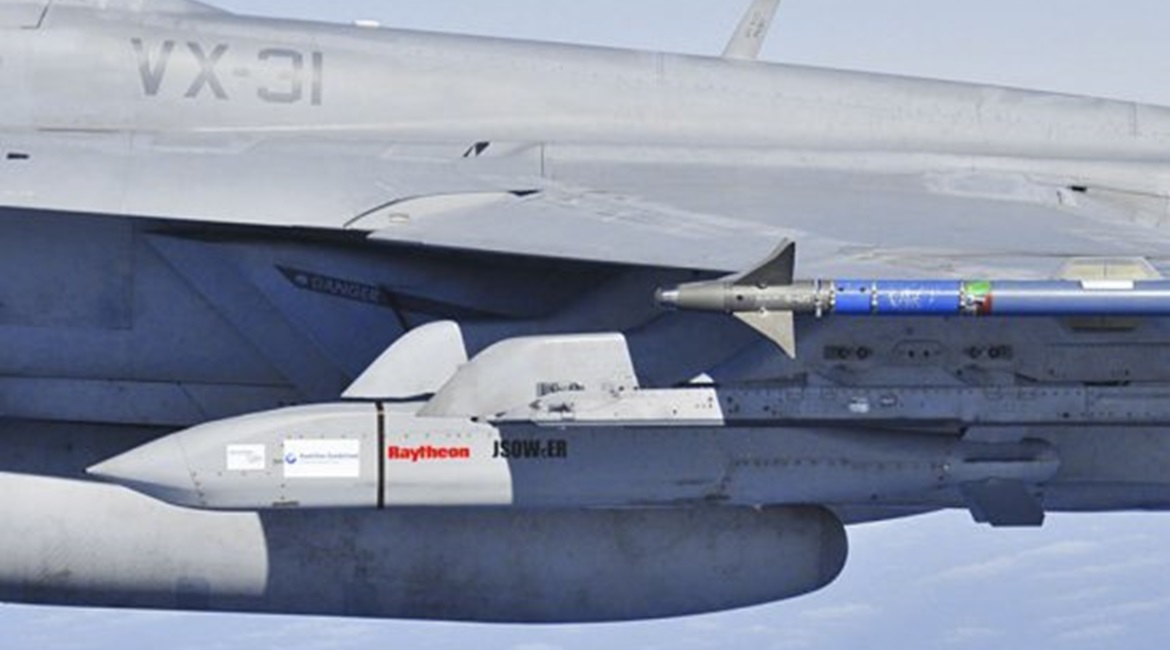
The US Navy (USN) is to award Raytheon a sole-source contract for the technology maturation risk-reduction (TMRR) and engineering, manufacturing, and development (EMD) phase of the extended-range (ER) variant of the AGM-154 Joint Stand-Off Weapon (JSOW).

A JSOW-ER prior to release by a Super Hornet test aircraft. The powered weapon has an unchanged outer mould line compared with the unpowered JSOW versions. (Raytheon)
A notification, issued by the US Naval Air Systems Command (NAVAIR) on 7 February, covers the TMRR and EMD phase of the JSOW-ER long-range air-to-surface missile that is intended to equip both the Boeing F/A-18E/F Super Hornet and Lockheed Martin F-35C Lightning II Joint Strike Fighter (JSF) aircraft.
Deployment of the missile is due no later than fiscal year 2023 (FY 2023).
The JSOW-ER has the same size, shape, and weight as the baseline JSOW glide-weapon, but incorporates a Hamilton Sundstrand TJ-150 turbojet (as fitted onto Raytheon’s MALD [miniature air-launched decoy]) to give it a reported range of about 463 km (compared with 22 km for the JSOW), while Raytheon has said it expects a maximum effective range of 555.6 km when launched under optimum conditions.
As noted by Jane’s Weapons: Air-Launched , the JSOW-ER shares the same upgraded imaging infrared (2IR/IIR) seeker as the AGM-154C-1-variant JSOW, which includes new modes (modified software) to engage moving targets at sea. It is equipped with a Rockwell Collins TacNet 1.0 (two-way strike common weapon datalink [SCWDL]) that enables the launch aircraft or another designated controller to provide real-time target updates to the weapon, or to reassign it to another target mid-flight.
Looking to read the full article?
Gain unlimited access to Janes news and more...






